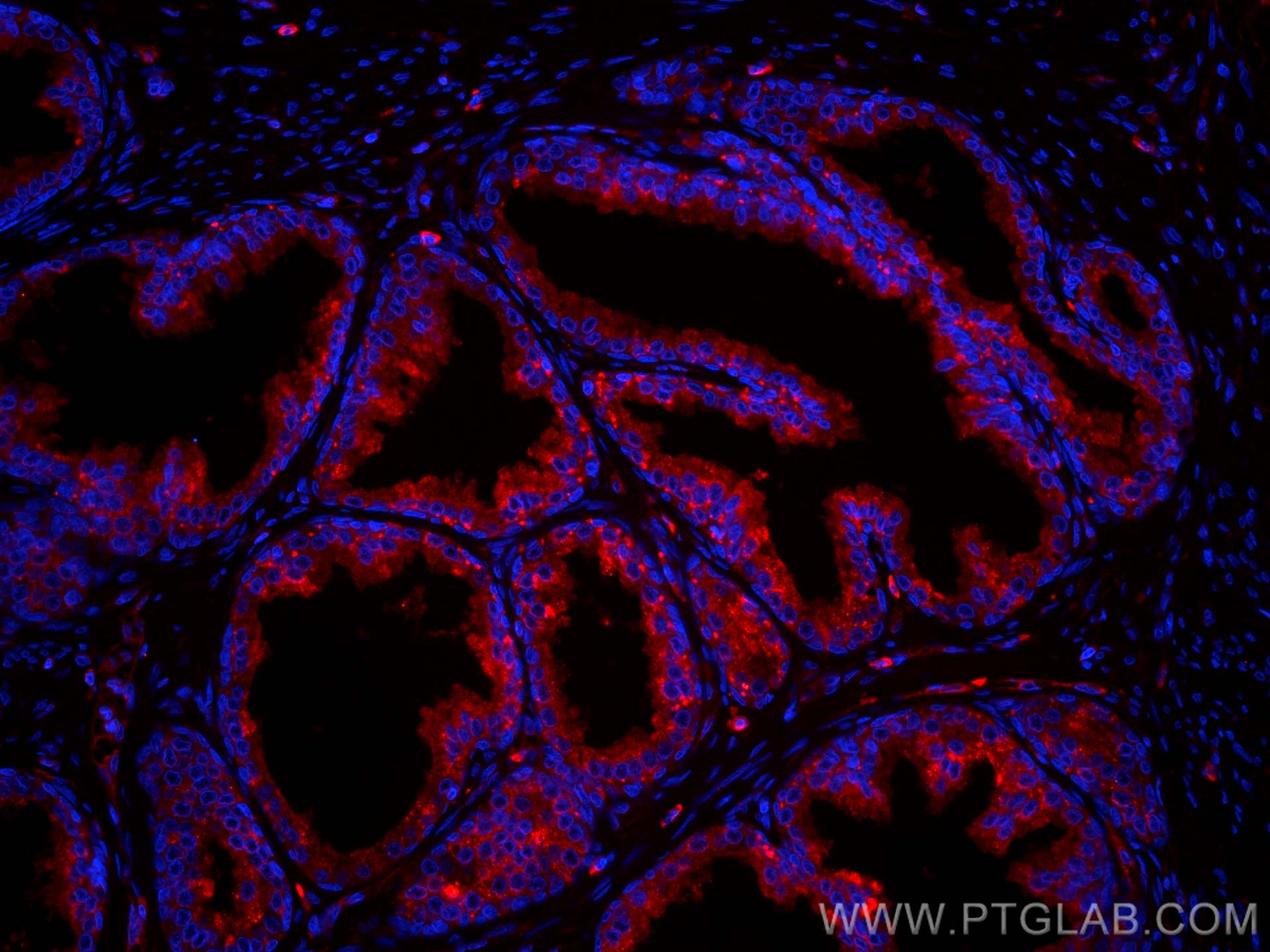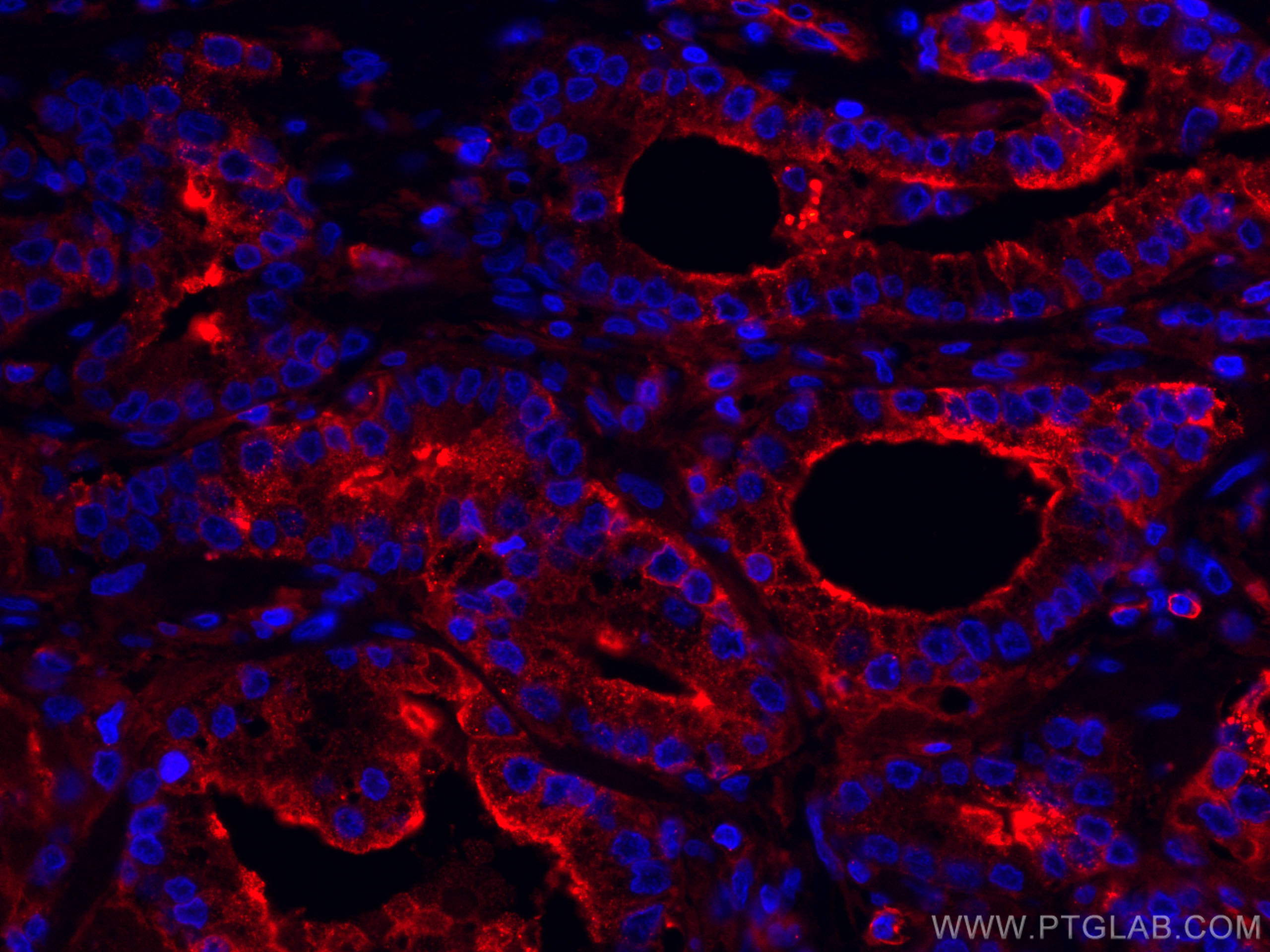Beta-2-Microglobulin Monoklonaler Antikörper
Beta-2-Microglobulin Monoklonal Antikörper für IF-P
Wirt / Isotyp
Maus / IgG2b
Getestete Reaktivität
human
Anwendung
IF-P
Konjugation
CoraLite®594 Fluorescent Dye
CloneNo.
1C3B7
Kat-Nr. : CL594-66207
Synonyme
Geprüfte Anwendungen
| Erfolgreiche Detektion in IF-P | humanes Prostatakarzinomgewebe |
Empfohlene Verdünnung
| Anwendung | Verdünnung |
|---|---|
| Immunfluoreszenz (IF)-P | IF-P : 1:50-1:500 |
| It is recommended that this reagent should be titrated in each testing system to obtain optimal results. | |
| Sample-dependent, check data in validation data gallery | |
Produktinformation
CL594-66207 bindet in IF-P Beta-2-Microglobulin und zeigt Reaktivität mit human
| Getestete Reaktivität | human |
| Wirt / Isotyp | Maus / IgG2b |
| Klonalität | Monoklonal |
| Typ | Antikörper |
| Immunogen | Peptid |
| Vollständiger Name | beta-2-microglobulin |
| Berechnetes Molekulargewicht | 14 kDa |
| Beobachtetes Molekulargewicht | 13 kDa |
| GenBank-Zugangsnummer | BC032589 |
| Gene symbol | B2M |
| Gene ID (NCBI) | 567 |
| Konjugation | CoraLite®594 Fluorescent Dye |
| Excitation/Emission maxima wavelengths | 588 nm / 604 nm |
| Form | Liquid |
| Reinigungsmethode | Protein-A-Reinigung |
| Lagerungspuffer | PBS with 50% glycerol, 0.05% Proclin300, 0.5% BSA |
| Lagerungsbedingungen | Bei -20°C lagern. Vor Licht schützen. Nach dem Versand ein Jahr stabil. Aliquotieren ist bei -20oC Lagerung nicht notwendig. 20ul Größen enthalten 0,1% BSA. |
Hintergrundinformationen
Beta-2-microglobulin (B2M) is a component of MHC class I molecules, which are present on the surface of nearly all nucleated cells. It can be found in body fluids under physiologic conditions as a result of shedding from cell surfaces or intracellular release. B2M has various biological functions, including antigen presentation. Investigations reveal that increased synthesis and release of B2M are present in several malignant diseases.
Protokolle
| PRODUKTSPEZIFISCHE PROTOKOLLE | |
|---|---|
| IF protocol for CL594 Beta-2-Microglobulin antibody CL594-66207 | Protokoll herunterladen |
| STANDARD-PROTOKOLLE | |
|---|---|
| Klicken Sie hier, um unsere Standardprotokolle anzuzeigen |



